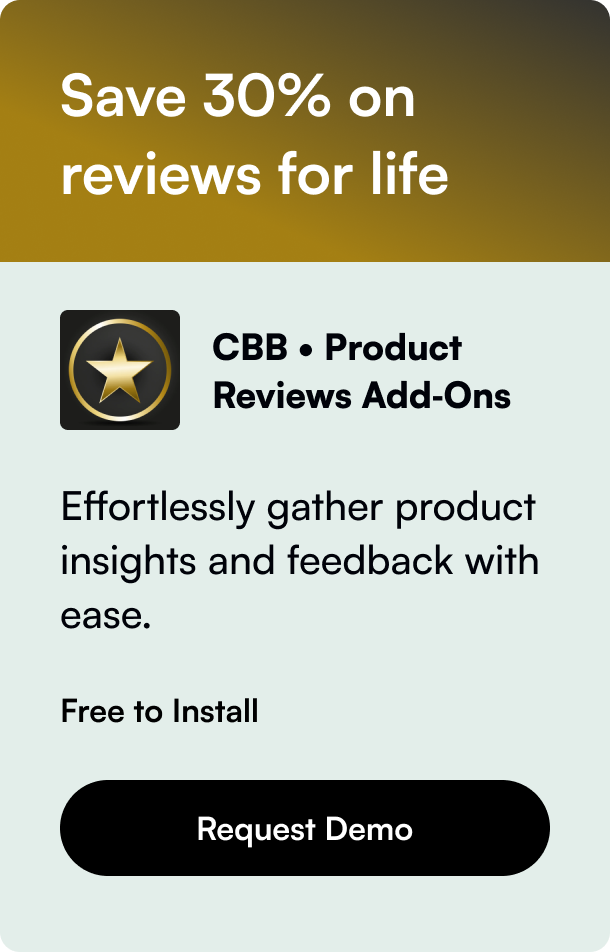Table of Contents
- Introduction
- Why Custom Pages on Shopify Matter
- Creating Your Custom Page: The Preparation Phase
- Crafting the Perfect Custom Shopify Page
- Evaluating and Optimizing Your Custom Page
- Conclusion
- FAQ Section
Introduction
Are you looking to add a unique touch to your Shopify store by creating a custom page? Whether you want to tell your brand story, create an engaging about us page, or offer a personalized collection of products, crafting a custom page can significantly enhance your customer's experience. In today's digital world, customization on an eCommerce platform isn't just a luxury—it's an essential strategy for standing out. Let's dive into how you can design a custom page that resonates with your visitors and aligns perfectly with your brand's identity.
Why Custom Pages on Shopify Matter
For online businesses, the power of customization cannot be understated. A custom page in your Shopify store gives you the freedom to:
- Showcase unique content that captivates your audience.
- Provide detailed information about products or promotions.
- Create an immersive brand experience that fosters loyalty.
- Optimize conversions through tailored displays and calls-to-action.
In this article, you'll navigate the step-by-step process of creating a tailored page on Shopify, integrating best practices to ensure your page not only looks great but also drives results.
Creating Your Custom Page: The Preparation Phase
Before you jump into the Shopify dashboard, consider the following to ensure your custom page aligns with your business objectives:
- Determine the purpose of the page: Is it for storytelling, additional product details, faqs, or something else?
- Sketch the layout: Visually plan your page – think about images, text placement, and any unique elements.
- Collect assets: Prepare all images, videos, logos, and text copy you plan to feature on the page.
- Know your audience: Design the page with your target demographic in mind – consider their preferences, pain points, and motivations.
Crafting the Perfect Custom Shopify Page
Once you have your plan in place, follow these steps within your Shopify admin to create your custom masterpiece:
Getting Familiar with Templates
-
Access Theme Customization: Go to 'Online Store', then 'Themes', find yours and click 'Customize'.
-
Create a New Template: For newer themes, Shopify allows the creation of new page templates. Click the 'Create template' option in the theme editor. For older themes, you may need to delve into the code or use a third-party app page builder.
Design and Content Implementation
-
Pick a Starting Foundation: New templates may offer basic starting designs. Choose one closest to your vision and begin the customization process.
-
Layout Essentials: Utilize Shopify sections, like galleries, text blocks, and image with text, to construct the framework of your custom page.
-
Enhance with Details: Integrate your collected assets – place images, embed videos, add descriptive text, and create engaging calls-to-action.
-
Consistent with Branding: Ensure your fonts, color scheme, and overall aesthetic reflect your brand for coherent visual storytelling.
Advanced Customizations (Optional)
-
Third-Party Apps: Explore Shopify's App Store for page builder apps that can offer deeper flexibility in design without the need for coding.
-
Coding Expertise: If you're skilled in HTML, CSS, and Liquid (Shopify's templating language), dive into the code and weave unique elements not available through the default editor. Adjustments here must be performed carefully to maintain site integrity and responsiveness.
Evaluating and Optimizing Your Custom Page
After creation, review the following aspects before going live:
- Functionality: Confirm all links, buttons, and navigation work flawlessly.
- Responsiveness: Test across devices to ensure the page looks and operates smoothly.
- SEO Best Practices: Optimize your content with keywords, meta descriptions, and alt texts to aid your online visibility.
- Load Times: Balance high-quality images with page speed. Compress and optimize media for quick loading.
- Feedback Loop: Solicit opinions from colleagues or a subset of customers for initial impressions and areas of improvement.
Lastly, always remember the dimension of ongoing optimization. Don't hesitate to make changes post-launch based on customer behavior and conversion metrics.
Conclusion
Developing a custom page on Shopify paves the way for a more personalized shopping experience that can substantially uplift your brand image and customer satisfaction. Employ this actionable guide to construct versatile, high-converting custom pages tailored to meet both your business goals and customer desires.
FAQ Section
Can I create multiple custom pages in Shopify?
Yes, you can create as many custom pages as you require, providing opportunities to cater to various customer needs or highlight different facets of your brand.
Do I need a developer to create a custom page in Shopify?
Not necessarily. Shopify's template editor is quite user-friendly. However, for more complex customizations or unique functionalities, you may want to consider hiring a developer or using a page-building app.
Will my custom page be mobile-responsive?
Responsiveness should be part of Shopify's themes, but it's always good practice to test and ensure your custom page adapts correctly to various screen sizes.
How can I measure the success of my custom page?
Track metrics such as page views, time spent on the page, bounce rate, and conversions through analytics tools like Google Analytics. This data offers valuable insights into the page's performance and user engagement.
Can I A/B test my custom Shopify pages?
Absolutely! Use apps or third-party tools to conduct A/B testing on different elements or layouts to understand what works best for your target audience and drive better conversions.








